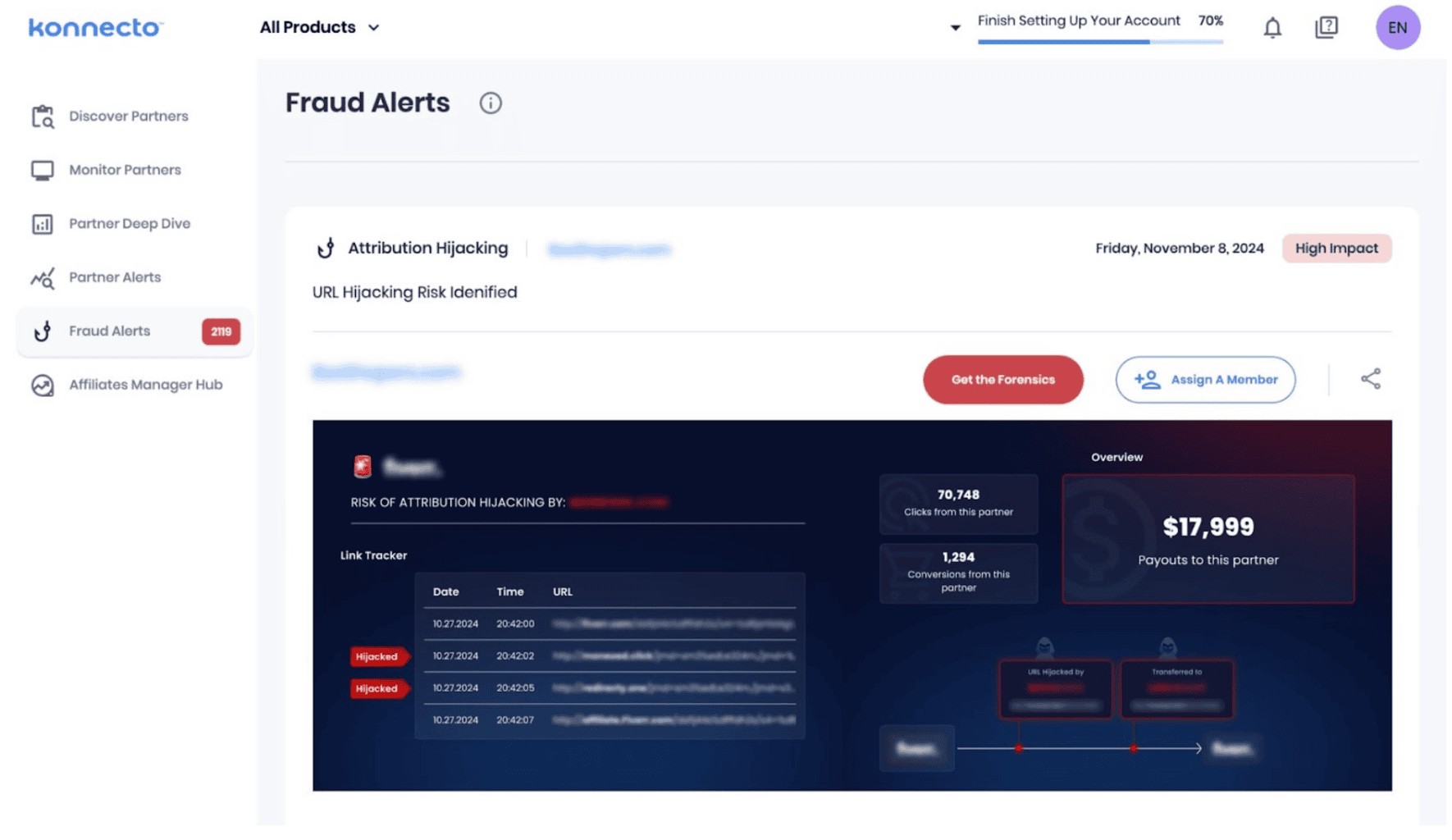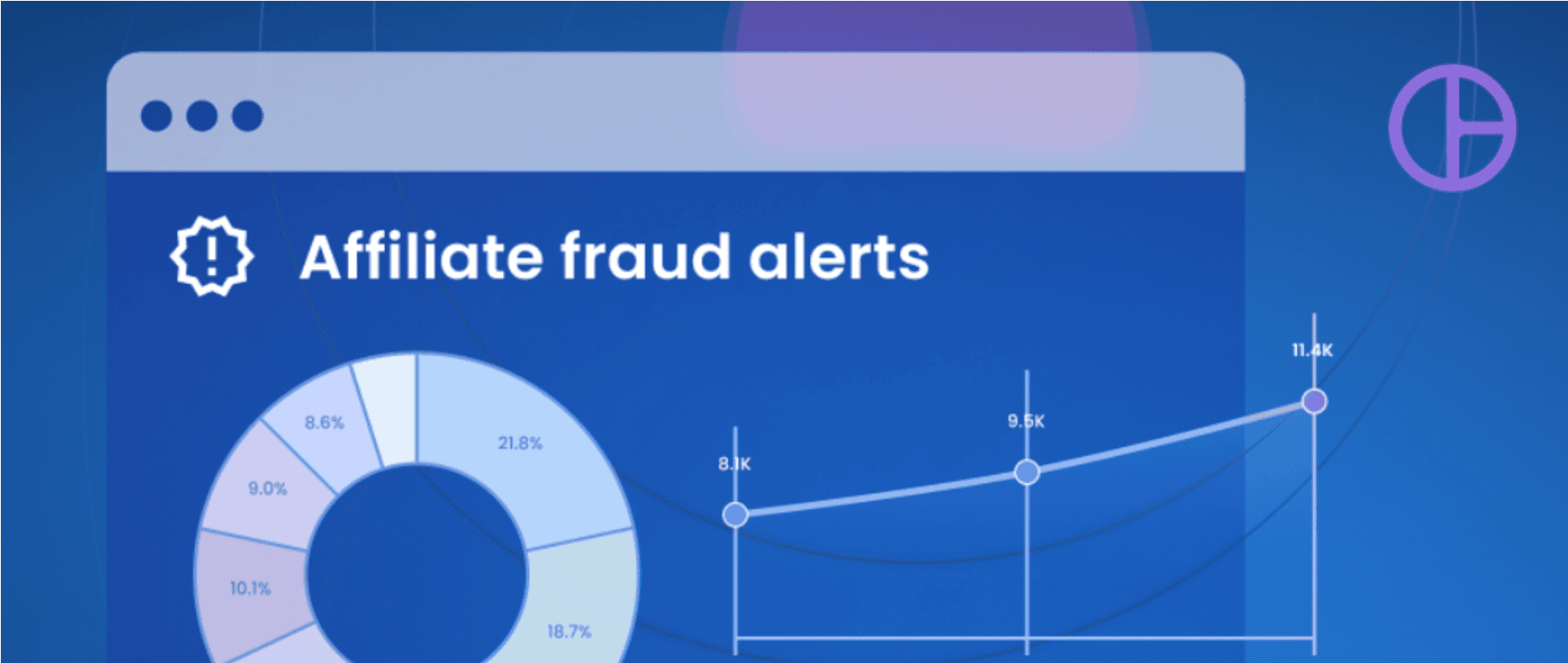Attribution Hijacking – Are You Being Affected?

Affiliate marketing can be an incredibly effective way to drive sales and grow your brand, but like any high-reward space, it attracts a few bad actors. Attribution fraud, also known as attribution hijacking, has become a growing concern for brands that are established and looking to scale incremental sales strategies. If left unchecked, attribution hijacking can have a serious effect on your profit margins and implement how sales are awarded against your spend. In short – it can seriously damage a brand’s revenue, skew performance data, and undermine the trust of honest affiliates.
The truth is that the affiliate industry is losing significant revenue each year due to poor tracking set up as marked by AWIN’s recent Conversion Protection Initiative (ICP) which was announced on 23 October at PILive in London which aims to mitigate and encourage the affiliate industry to move to S2S tracking and app based tracking methodologies. These probabilistic tracking methods will seek to help advertisers improve their conversion and protect themselves against attribution hijacking.
Konnecto, a leader in affiliate intelligence, has been at the forefront of tackling this issue and recently shared some interesting stats on their linkedin channel detailing the number of instances of attribution hijacking their platform detected in a short period of time. The post referenced below identified over $1 million in fraudulent payouts, all thanks to their innovative approach to tracking the full path to conversion.

Let’s explore how attribution fraud works, its impact on affiliate programs, and how tools like Konnecto can help you keep your program accurately attributing sales and remain profitable.
What is attribution hijacking?
Attribution hijacking is a scheme where certain affiliates manipulate tracking systems to claim credit for conversions or sales – that aren’t rightfully theirs.
They may use different tactics and add their affiliate tracking links to traffic they didn’t drive. This way, it appears that they were responsible for the sale, and they receive a commission. In reality, the traffic often comes from organic, direct, social, other affiliates or paid search sources, and the affiliates claiming it had nothing to do with bringing those customers to the brand.
This type of hard to detect tracking fraud is designed to fly under the radar. Without specific tracking and monitoring tools in place, it can be incredibly difficult for brands to spot. Fraudsters are crafty, often using techniques that are invisible to the end-user, and even to the brand itself, unless sophisticated monitoring is in place.
Common methods used in attribution hijacking
To understand how to combat attribution fraud, it helps to know the most common tactics fraudsters use:
- Malware: Some fraudsters deploy malware on users’ devices that automatically add an affiliate tracking ID whenever a user visits the brand’s site. This creates the illusion that the affiliate drove the traffic, even when the user arrived through organic search or direct links.
- Redirects and cookie stuffing: Fraudsters use redirects to automatically place an affiliate cookie on a user’s browser, which means they can claim credit for the conversion even though the traffic didn’t originate from them. This technique, known as cookie stuffing, is a widespread tactic for manipulating attribution.
- Paid media manipulation: In some cases, fraudulent affiliates may exploit a brand’s paid media strategy. They inject tracking codes, effectively claiming credit for paid traffic they didn’t actually drive, diverting attribution away from legitimate sources.
These methods allow dishonest affiliates to steal credit and commissions from genuine traffic sources. While it may look like a small issue initially, the financial and operational implications for a brand can be significant.
The impact of attribution fraud on brands
Attribution fraud does more than just waste money. Its effects ripple through the entire affiliate ecosystem, disrupting the relationship between brands and their affiliate partners, and damaging program performance in multiple ways.
- Financial losses: Brands lose revenue when they pay commissions to affiliates who haven’t genuinely driven sales. Konnecto recently revealed that in the week before Black Friday sales began for one of their clients they identified a $50K affiliate fraud being seen that was previously undetected by other platforms. For large affiliate programs, these kinds of losses can quickly add up, impacting profitability and reducing the return on investment in affiliate marketing.
- Distorted data and poor decision-making: Attribution fraud skews performance data, making it difficult to understand which channels are driving real value. When brands mistakenly attribute conversions to fraudulent affiliates, they may divert resources away from high-performing, genuine affiliates or other better value channels, leading to ineffective marketing strategies being applied across their business.
- Erosion of trust in the program: Fraud erodes trust within affiliate programs, harming relationships with legitimate affiliates who work hard to drive real traffic. When honest affiliates see manipulative behaviour going unchecked, they may disengage from the program, and word can spread that a brand’s program lacks oversight. This reputational damage can make it harder to attract quality partners in the future.
Visibility without complexity
Detecting and addressing attribution hijacking requires more than just vigilance; it needs the right tools. Brands need to see the Full Path to Conversion of specific products for an in-depth view of the entire customer journey, allowing them to spot unusual patterns and uncover fraud in their affiliate programs.
What’s unique about Konnecto’s approach is that it doesn’t require complex integrations or technical set-ups—brands can access a clear picture of their affiliate traffic and conversions without a heavy lift. The tool shows where customers actually came from, based on models that have been developed over the past 7 years, tracking every touchpoint leading up to a conversion and how that benchmarks to your competitors too.
By revealing the full journey, it becomes easier to see when an affiliate is fraudulently taking credit. Whether it’s a suspicious spike in conversions from a low-quality source or an unexpected increase in cookie drops, Konnecto’s insights highlight where things may be going wrong.

Actionable steps to prevent attribution hijacking in your program
Affiliate managers can take steps to protect their programs profit margins and attribute sales accurately especially when multiple channels of acquisition are in play.
Here are some practical tips:
- Create path-to-conversion analysis: Affiliate platforms that show the entire path-to-conversion in their reports will allow managers to spot inconsistencies and patterns that might indicate fraud.
- Set up real-time alerts: Monitoring unusual affiliate behavior, such as abnormally high conversion rates from questionable sources, can provide an early warning. Regular audits of affiliate sources help to catch fraud before it causes too much damage.
- Shorten attribution windows: Reducing the window of time in which conversions can be attributed to affiliates can help minimize the impact of cookie stuffing and other fraudulent techniques.
- Restrict risky methods: By blocking certain tracking methods or blacklisting affiliates with a history of malware use, brands can limit the chances of fraud taking place within their programs.
- Offer transparent reporting: Providing affiliates with detailed reporting on program performance encourages ethical practices and helps foster trust. When affiliates see that they’re being monitored, it’s harder for fraudsters to operate unchecked.
If you’re running an affiliate program and suspect that attribution hijacking might be occurring on your program the guidance above offers a few valuable first step actions. Alternatively book a free demo call with the Konnecto team and ask them to run an initial report to establish if this is a problem in your program already.
Don’t let fraud drain your affiliate program profit
Attribution hijacking is a serious challenge to manage, but it doesn’t have to be a costly one. With the right tools and strategies, affiliate managers can keep their programs clean and ensure that commissions go to partners who genuinely contribute value. Affiliate programs thrive on trust and transparency, and with Konnecto’s support, you can protect both.
Book a call with Konnecto’s team via this link.






